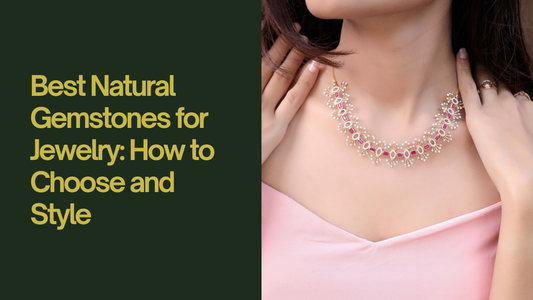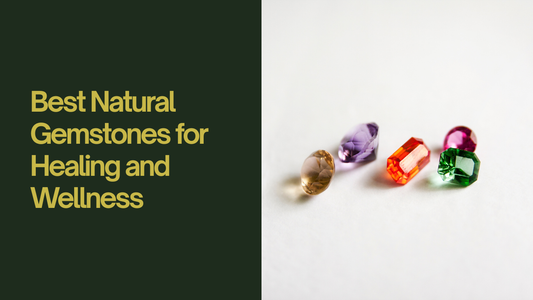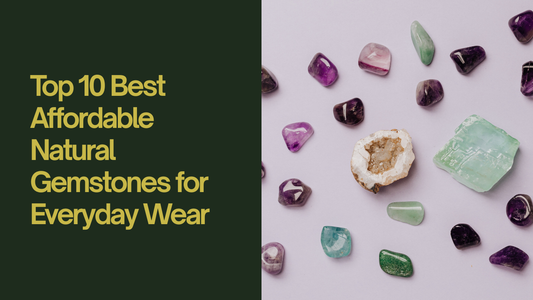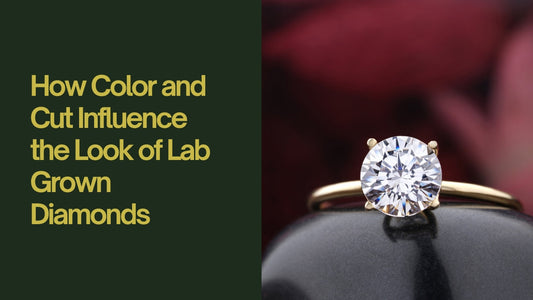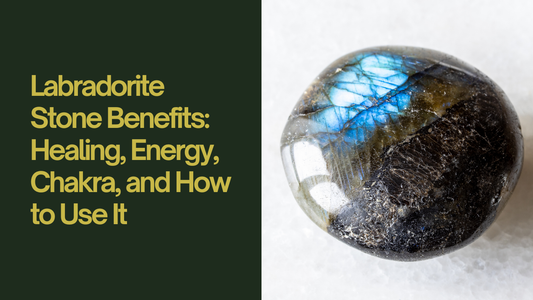
History of Gemstones From Ancient Civilizations to Modern Day
Gemstones have been a symbol of beauty, power, and mystery for thousands of years. From ancient civilizations that believed in the mystical powers of these stones to their modern role in fashion and luxury, the history of gemstones is as vibrant as the gems themselves. Let's take a journey through time to understand how gemstones have shaped human culture and continue to fascinate us today.
Ancient Civilizations and the Power of Gemstones
In ancient times, gemstones were much more than decorative pieces; they were believed to hold magical and healing properties. Take ancient Egypt, for example. The Egyptians were one of the first civilizations to use gemstones in their daily life. They believed that certain stones, like turquoise and lapis lazuli, offered protection in the afterlife. Pharaohs, including the famous Cleopatra, wore gemstones not only to showcase wealth but also to connect with the divine.
In ancient Mesopotamia, people used gemstones such as agate and jasper as protective amulets, carving them into seals. These stones were thought to offer safety from evil spirits. Across the world in ancient China, jade was more than just a decorative stone; it was a symbol of purity, wisdom, and power. The Chinese used jade in everything from jewelry to ceremonial objects.
In India, gemstones like diamonds and sapphires have a rich history of being used to attract good fortune and ward off negative energy. The ancient texts in India often mention gemstones as essential tools for healing and spiritual growth.
Gemstones in the Middle Ages: Power and Protection
Fast forward to the Middle Ages in Europe, and gemstones were still considered to have special powers. They were often used by kings, queens, and priests to protect against illness and bad luck. One popular stone during this time was amethyst stone, which was believed to prevent intoxication. It wasn’t just for the wealthy though; people of all classes valued gemstones for their supposed health benefits.
During this period, gemstones were more than symbols of wealth. They became closely linked to Christianity, with religious figures wearing them as signs of spiritual authority. Stones like garnets were seen as symbols of faith, and emerald stones were associated with rebirth and renewal.
The Renaissance: The Rise of Modern Gemstone Cutting
The Renaissance marked a significant change in the world of gemstones. With new tools and techniques, jewelers were able to cut stones in ways that revealed their true brilliance. Before this, gemstones were often polished but not faceted. Faceting allowed light to interact with the stone, creating a sparkle that hadn’t been possible before.
During this time, gemstones became even more desirable among royalty. Diamonds became particularly popular, with rulers across Europe competing to own the biggest and brightest stones. The invention of new cuts, such as the brilliant cut, allowed diamonds and other stones to shine like never before.
The Global Gemstone Trade and Modern-Day Popularity
The gemstone industry has grown from small, local markets to a massive global trade. Countries like India, Brazil, and South Africa are major players in mining and producing gemstones, while places like Dubai have become major hubs for gemstone trade. The Dubai Gemstone Market has become known for offering high-quality stones from around the world, attracting collectors, jewelers, and tourists.
Dubai is famous for its Gold Souk, where traders offer a wide variety of gemstones and jewelry. For those looking for a more modern shopping experience, the Dubai Mall and Gold and Diamond Park are popular destinations for finding unique and valuable gemstones. These markets have become global centers for gemstone buying, where customers can be assured of quality and authenticity.
Gemstones in Modern Fashion and Jewelry
Today, gemstones play a massive role in the fashion industry. From engagement rings to luxury watches, they symbolize love, status, and personal taste. Diamonds, for example, are a symbol of eternal love, often used in wedding rings. But it’s not just diamonds; other stones like sapphires, emeralds, and rubies are also cherished for their beauty and meaning.
Celebrities and fashion designers regularly use gemstones in their collections. Gemstones are not just seen as luxury items; they are also part of a broader trend towards natural and sustainable fashion. People are becoming more aware of the origin of their gemstones, opting for conflict-free and ethically sourced stones.
Healing Properties of Gemstones: Myth or Reality?
Even in modern times, many believe that gemstones hold certain powers. For example, amethyst is often linked to calmness and spiritual healing, while rose quartz stone is said to attract love. Whether or not you believe in the healing properties of gemstones, there is no denying their importance in wellness culture. Many wellness enthusiasts use gemstones in meditation practices or as part of healing rituals.
Gemstone Cuts and Their Significance
Another fascinating aspect of gemstones is their cuts and shapes. A gemstone's cut can affect its value and how it reflects light. Popular gemstone shapes include:
- Round: The most classic and versatile shape, often used for diamonds.
- Oval: Elongated to give the appearance of larger size.
- Emerald Cut: Known for its long, rectangular facets, it’s popular for emeralds and diamonds.
- Heart: A romantic choice, often used for special pieces like anniversary gifts.
- Cushion: A square or rectangular shape with rounded edges, offering a vintage look.
Each shape has its own unique charm, and the right one depends on personal preference and the type of jewelry being crafted.
Why Gemstones Continue to Fascinate
Why are we still so fascinated by gemstones today? Perhaps it’s the fact that they come from the Earth, formed over millions of years. Or maybe it’s the way they capture and reflect light, reminding us of something eternal and precious. Whatever the reason, gemstones have a timeless appeal that spans cultures and generations.
Conclusion
From the royal courts of ancient Egypt to the bustling gemstone markets of Dubai, gemstones have played a significant role in human history. Whether you’re drawn to them for their beauty, their history, or their supposed healing powers, there’s no denying the lasting impact of gemstones on our world. They are symbols of wealth, love, and spirituality that continue to captivate us, generation after generation.
FAQs about History of Gemstones
What is the history of gemstones?
Gemstones have been used by people for thousands of years. Ancient civilizations like Egypt and China used them for protection, healing, and as a sign of wealth and power.
What was the first gem on Earth?
The zircon is one of the oldest known gems on Earth, believed to be over 4 billion years old.
What is the history of stones?
Stones have been important to people for a long time. They were used for spiritual rituals, healing, and as beautiful decorations.
Who was the first person to find a gemstone?
We don’t know exactly who found the first gemstone because ancient people from different parts of the world discovered gemstones thousands of years ago.
What is the #1 rarest gem?
The painite is considered one of the rarest gems in the world.
Who invented gemstones?
No one "invented" gemstones. Ancient people found gemstones and started using them because of their beauty and believed they had special powers.
What is the oldest known gemstone?
The zircon is the oldest known gemstone, some of which are more than 4 billion years old.
What is the most expensive stone in the world?
The Hope Diamond is one of the most expensive gemstones, worth hundreds of millions of dollars.
What is the most famous gem in the world?
The Hope Diamond, known for its deep blue color and interesting history, is one of the most famous gems in the world.
What are three facts about gemstones?
- Gemstones are formed deep in the Earth over millions of years.
- Some gemstones are rarer than diamonds.
- Many cultures believed gemstones had special healing powers.
Who decided gemstones?
No one person decided on gemstones. Over time, people all around the world started using gemstones for their beauty and believed they had special meanings or powers.

